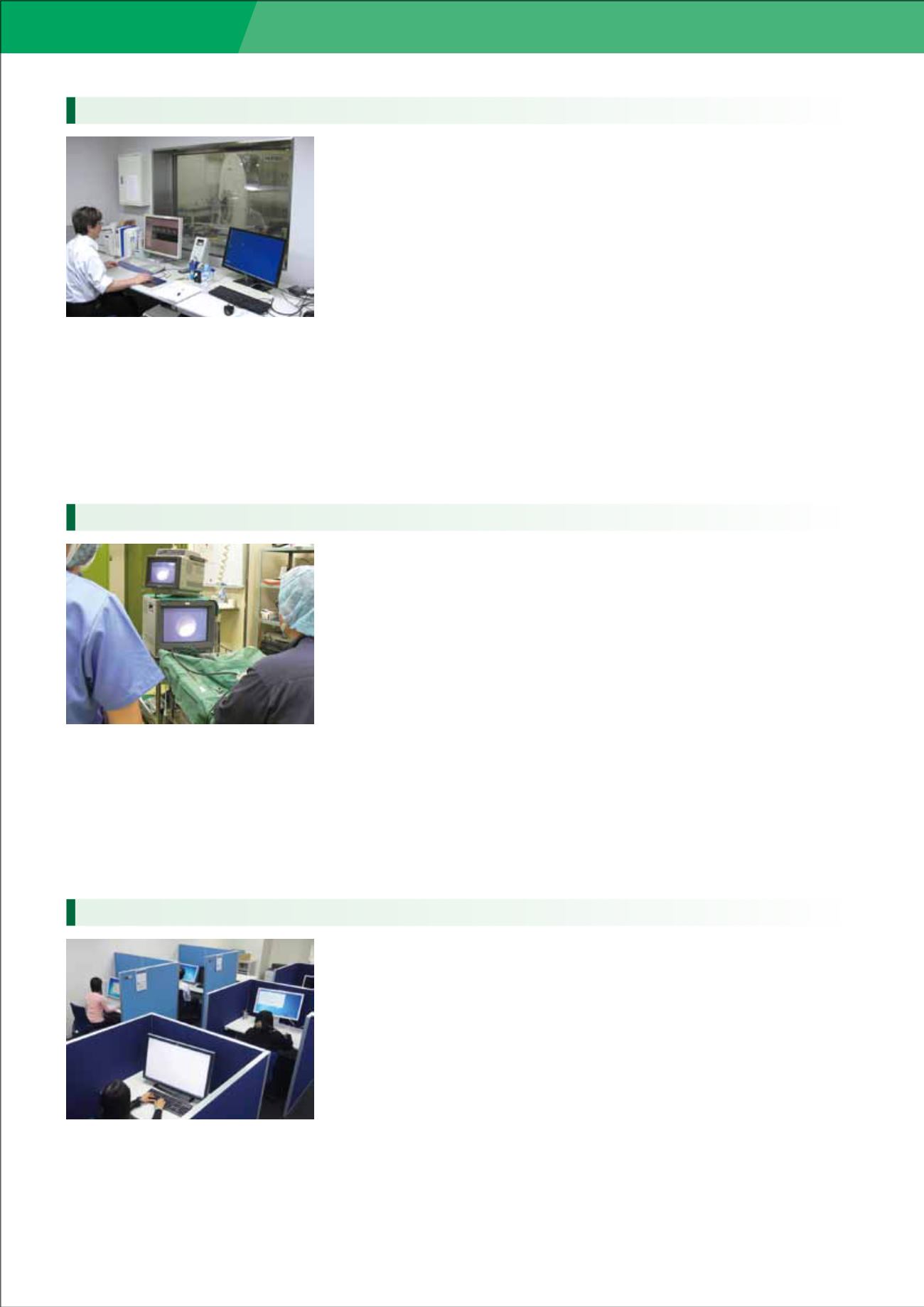
Research Centers and Facilities
教育研究施設等
Center for Epidemiologic Research in Asia(CERA)was established as the Japan’s first base for international collaborative epidemiologic research in October
2013. CERA is equipped the data management function, DNA repository function and research clinic function to enable the large-scale epidemiological survey.
In Japan and the rest of Asia, circulatory diseases (including heart disease and stroke) and life-style related risk factors such as diabetes, high blood pressure,
and dyslipidemia are becoming increasingly serious problems. CERA plans to construct leading-edge epidemiologic research involving circulatory diseases and
life-style related risk factors, and promotes international joint research.
Currently, we are conducting research of National Surveys on Circulatory Disorders, and the National Nutritional Surveys, Shiga Epidemiological Study of
Subclinical Atherosclerosis, Population-based Cardiovascular Disease Registry, International Collaborative Study on Nutritional Factors and Blood Pressure.
アジア疫学研究センターは、我が国初の「疫学研究拠点」として整備されました。大規模な
疫学調査に対応可能なデータ管理機能・バイオバンク機能・リサーチクリニック機能を兼ね備
えています。心臓病・脳卒中などの心血管病、およびその危険因子である糖尿病・高血圧・脂
質異常症などの生活習慣病の増加は、我が国のみならずアジア諸国においても深刻な健康
問題になっています。本センターはアジアにおける疫学研究教育の拠点となり、心血管病お
よび糖尿病を中心とした各種疾患に関する最先端の疫学研究、国際共同疫学研究を推進して
います。
現在、NIPPON DATA研究、滋賀動脈硬化疫学研究(SESSA)、滋賀脳卒中登録、高島研
究、栄養と血圧に関する国際共同研究INTERMAPなどの研究を進めています。
アジア疫学研究センター
Center for Epidemiologic Research in Asia
平成元年に先端技術を用い国際共同研究を推進し、身体の神経統御機構とその病理機序を解
明することにより、神経難病の克服等に資することを目的に分子神経生物学研究センターとして発
足しました。平成21年4月1日に改組し、神経難病病因学分野、神経難病診断学分野、神経難病治
療学分野、神経難病モデルサル開発分野を設置しました。神経制御の仕組みとその病理機序の解
明、MR画像法やワクチン療法など最先端技術を利用した神経難病診断法・治療法の開発、神経難
病モデルサルの開発を通して、神経難病の病因究明と画期的な診断・治療法を研究しています。
平成26年4月にはMR医学総合研究センターと統合、同年11月より認知症研究分野を新設
し、神経難病研究推進機構・分子神経科学研究センターとして神経難病の解決を目指して研究
を行っています。
Molecular Neuroscience Research Center was established in 1989. In 2009, the center was reorganized as Research Promotion Organization for
Intractable Neurological Disease Molecular Neuroscience, MNRC composed of four research units for Neurology, Neuropathology and Diagnostics,
Neurobiology and Therapeutics, and Animal Models of Neurological Disorders.
MNRC seeks to develop diagnostic methods and treatments, and investigate causes of neurodegenerative diseases through elucidating mechanism and
pathomechanism of neural control, using advanced technologies such as MR-imaging, vaccine therapy, developing model monkey of neurodegenerative
diseases.
MNRC integrated with Biomedical MR Science Center in April, 2014 and created Dementia Research Unit aiming to solve neurological diseases in
November, 2014.
分子神経科学研究センター
Molecular Neuroscience Research Center
動物実験を実施するための中心的機能を果たす学内共同教育研究施設です。マウス、ラット、
モルモット、ウサギ、ブタ、サル類などが、国際的基準に則った適切な環境下で飼育されていま
す。マウス、ラットおよびサル類の感染実験施設があること、学内外との大規模な共同研究が可
能なサル類の実験施設があることが特徴です。世界的にも希有なカニクイザルの人工繁殖技
術を保有し、微生物学的ならびに遺伝学的に統御された個体の作出が可能です。この技術をも
とに、移植免疫寛容型の個体が計画的に産出され、iPS細胞等を用いる再生医療の前臨床試験
などに広く利用されることになっています。その他に認知症モデルサルの作製、ヒトを含む霊長
類の全能性に関わる遺伝子を検索するためのサル受精卵作製、眼科領域の再生医療の前臨床
試験などが行われています。これらの実験は動物に関する特殊技能を持った動物生命科学研究
センターの職員によって支えられています。
Research Center for Animal Life Science is the joint-use facility for animal experiment. Various kinds of animals (mice, rats, guinea pigs, rabbits, pigs, monkeys,
etc.) are raised under the appropriate environment which conforms to the international standards. The feature of RCALS is having a facility for the Infection
experiment of mice, rats and monkeys, and a facility for the experiments of monkeys that possible to conduct large-scale joint research with both inside
and outside of the university. Using an artificial breeding technique and a transgenic technique, produce Cynomolgus Monkey used for preclinical studies of
regenerative medicine using iPS cell, research on Alzheimer’s disease, searching genes related to the totipotency of primates. These experiments are supported
by center staffs with special skills.
動物生命科学研究センター
Research Center for Animal Life Science
27


